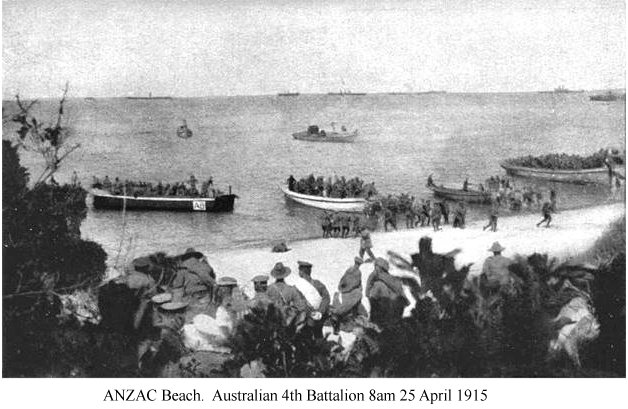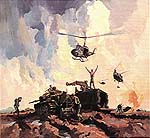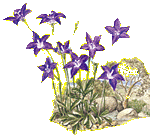
Life Boat Number 5
Unseen in the early morning darkness on the 25 April, 1915, an invasion force of three battleships, HMS London, Queen and the Prince of Wales, troop transports and destroyers arrived off the Turkish coast.
The lifeboats used by the Australians in the initial landing at the Gallipoli Peninsula. were of clinker construction with a single bow and stern posts connected to a heavy exposed keel. They could absorb considerable damage and were able to be used later for various tasks during the Gallipoli campaign. One of these towed life boats from the troop transport Devanha was numbered five. At 3-30 am, the first wave of troops from the 3rd battalion in the row boats towed by Royal Navy steam powered pinnaces began chugging towards the shore. There was no moon and the sea was like glass. As they made for land, a naval officer in the north noticed that those to the south of him [starboard] were making a northerly course, one that would bring them to land too far north of Gaba Tepe, their original planned landing point. It’s possible that several pinnaces mistook the small headland of Ari Burnu for Gabe Tepe and began steering towards it. When the station keeper in the south tried to head them off, they possibly mistook his intent and headed even further north. Whatever the real cause the pinnaces went in the wrong direction is still the subject of debate. It was nevertheless, a disastrous mistake.
Private Facey; ‘All went well until we were making the change into the rowboats. Suddenly, all hell broke loose; heavy shelling and shrapnel fire commenced. Bullets were thumping into us in the rowboat. Men were being hit and killed all around me. When we were cut loose to make our way to shore was the worst period. I was terribly frightened. The rowboat touched bottom some thirty yards from the shore so we had to jump out and wade onto the beach. The water in some places was up to my shoulders. The Turks had machine guns sweeping the strip of beach where we landed-there were many already dead when we got there. Bodies of men who had reached the beach ahead of us were lying along the beach and wounded men were screaming for help. We couldn’t stop for them. The Turkish fire was terrible and mowing into us. The order to line up on the beach was forgotten. We ran for our lives over the strip of beach and got into the scrub and bush. We used our entrenching tools to dig mounds of earth and sheltered from the firing until daylight.’
Life Boat Number Five was only one of two used by Australian troops to survive the war and can be viewed at Melbourne’s Shrine of Remembrance as the central highlight in the new forty five million dollar ‘Galleries of Remembrance.’



